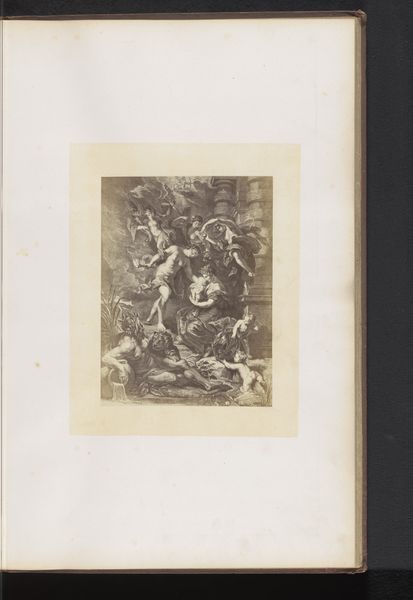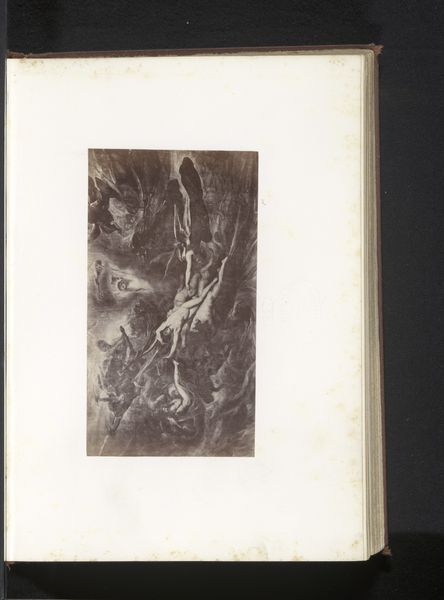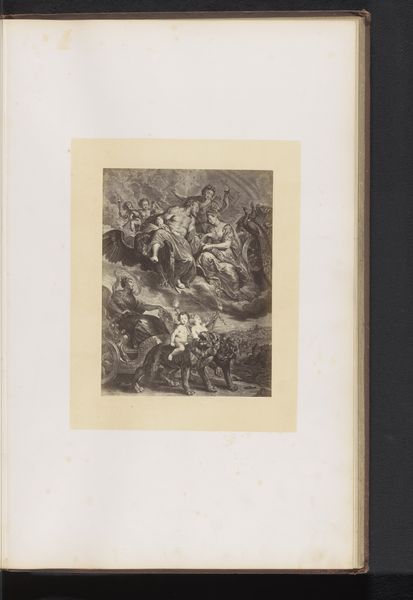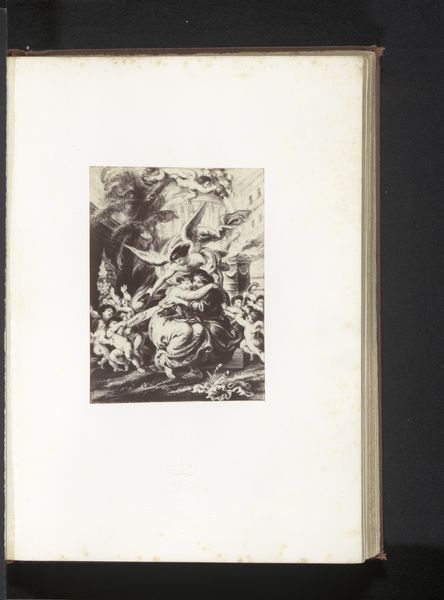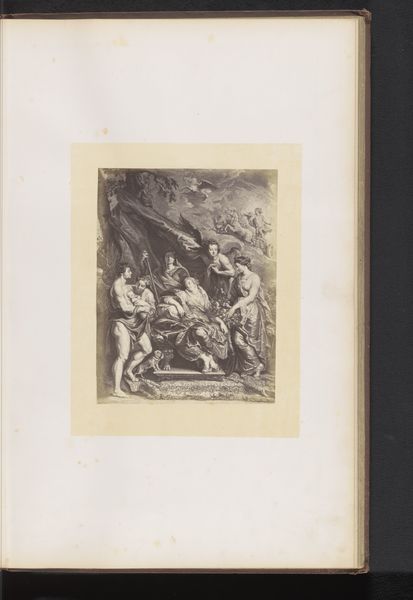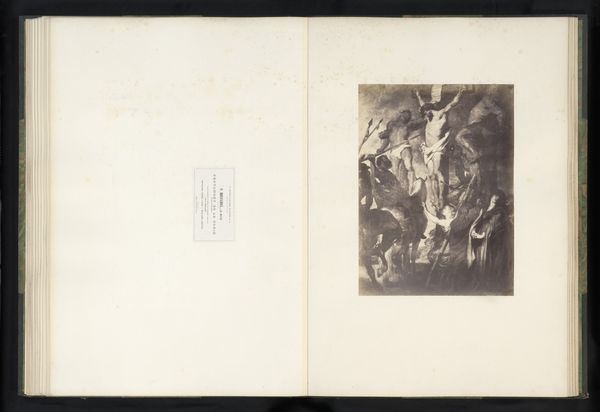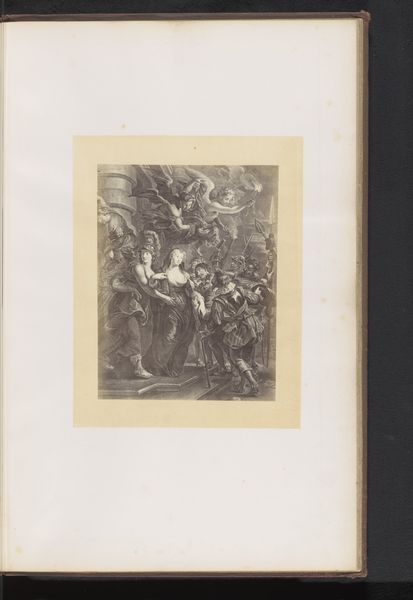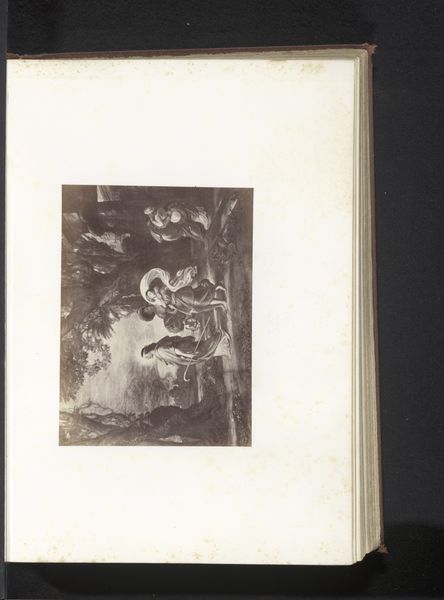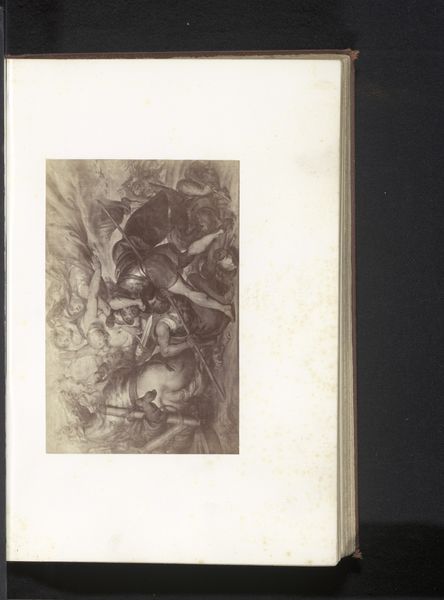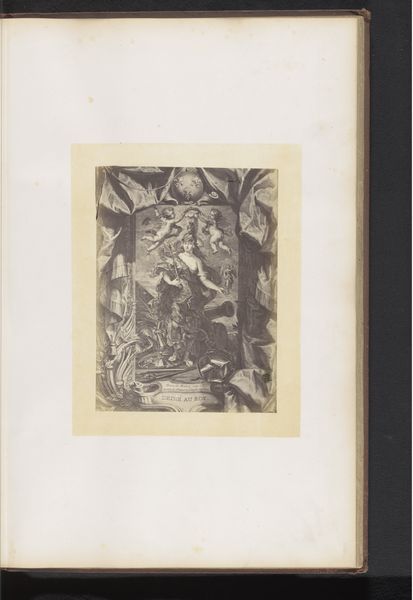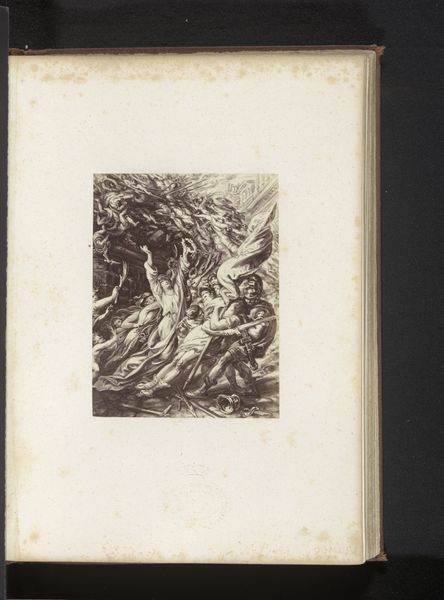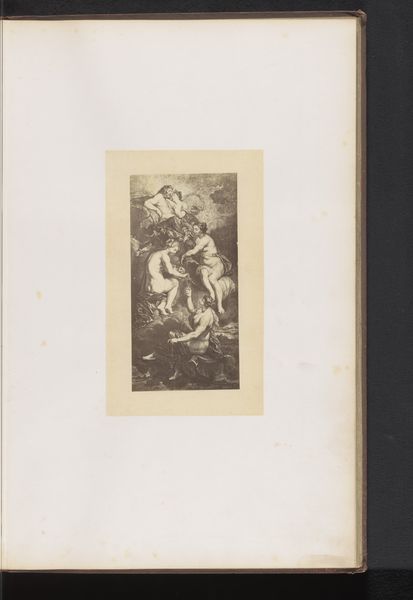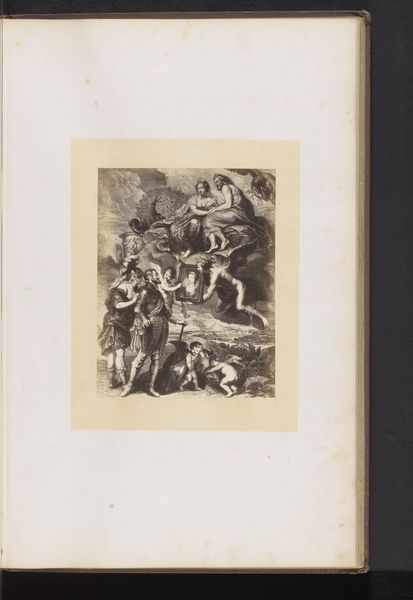
Fotoreproductie van een gravure van Aankomst van Maria de'Medici in de haven van Marseille door Jean-Marc Nattier, naar het schilderij door Peter Paul Rubens before 1864
0:00
0:00
Dimensions: height 203 mm, width 151 mm
Copyright: Rijks Museum: Open Domain
Curator: This artwork, housed here at the Rijksmuseum, is a photographic reproduction of an engraving. It depicts Jean-Marc Nattier’s interpretation of Peter Paul Rubens' painting, "The Arrival of Maria de' Medici in Marseilles," and it dates from before 1864. Editor: What strikes me immediately is the dynamic composition—a whirlwind of figures rendered in dramatic light and shadow. It has an intensity that hints at the power dynamics it represents. Curator: Absolutely. Consider the historical context: Rubens' original was part of a series commissioned by Marie de Medici herself, a queen aiming to legitimize her reign through art. Nattier’s engraving, and this photograph of it, extends that agenda through different mediums. It also speaks to the increasing availability of images and, of course, a way to further spread powerful propaganda. Editor: So, this isn't just art; it's a carefully constructed narrative of power, specifically feminine power. Note how Marie is centered, almost radiating light. But what about the marginalized voices? Is the 'divine right' of queenship something that the artwork encourages us to consider critically? What did it mean to rule then, versus now? Curator: Those are key questions. The engraving technique allows for a broad distribution, reaching audiences far beyond the court. How did diverse social classes interpret this idealized vision of Marie's arrival, amidst their own struggles for agency? Also, note the material of aged paper—it hints at its complex and historical existence. Editor: It brings the debate around the politics of imagery into sharp focus. It invites us to confront whose stories are told, how they're told, and by whom. Curator: Precisely. Examining its production and distribution encourages us to reflect on how art shapes and reflects power dynamics. Editor: And understanding these dynamics is crucial, I think, for understanding our own present. I see it as a powerful testament to the lasting effects of carefully crafted images.
Comments
No comments
Be the first to comment and join the conversation on the ultimate creative platform.
